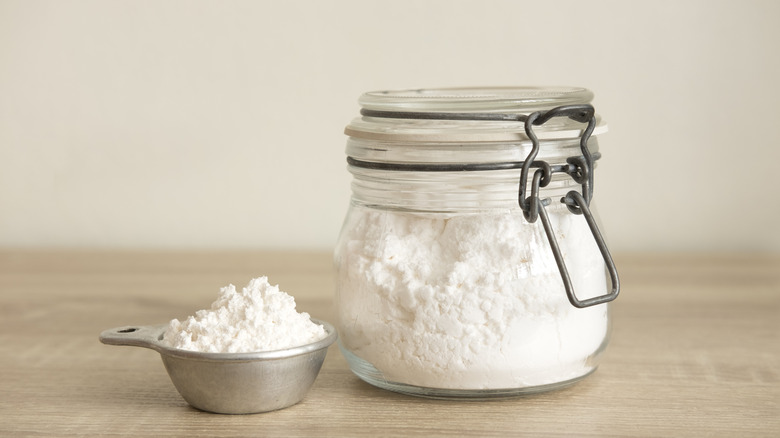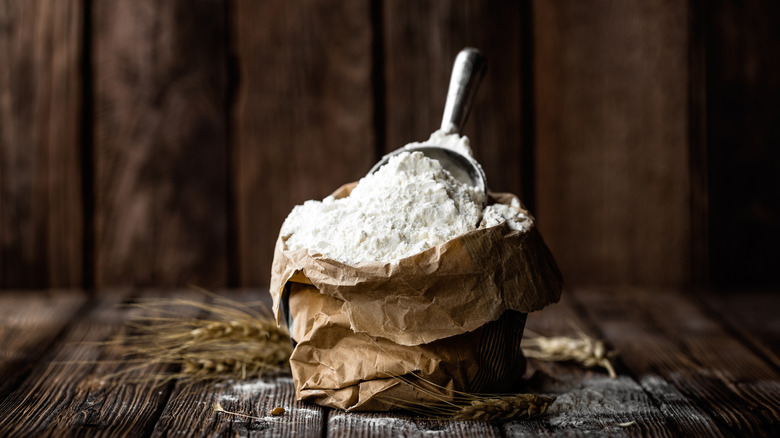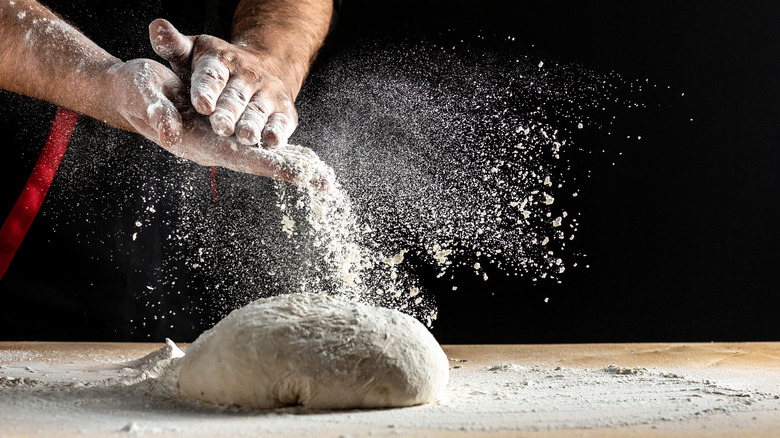Here's The Best Way To Easily Store Your Giant Bag Of Flour
Flour: Whether you're dredging chicken in it, baking some homemade bread, or making cookie dough, it's an incredibly useful and versatile ingredient to have in the kitchen. You'd be hard-pressed to find any kitchen that doesn't have a bag of flour somewhere in it. But while flour is a key ingredient in our kitchen, there's just one problem: Where do you put it?
Bags of flour, especially those larger 50-pound bags, aren't exactly easy to store given their weight and size. You may find yourself rearranging your pantry just to fit in a 10-pound bag of the stuff without having to cram it in there. But just because it's hard to store flour doesn't mean it's impossible. MasterClass suggests putting your flour in airtight containers and putting them in either a dry, dark place like a cabinet or in a cool place like a refrigerator. When properly stored, Real Simple tells us that flour can last up to 10 months, making the knowledge about how to store your flour all the more important.
But with those absolutely gigantic bags of flour, perhaps something you got at Costco or Sam's Club on a bargain, where can you put those? One suggestion has you put it in a pretty unlikely place.
Put that bag of flour in the trash
Okay, hold on, we're just kidding with you — kind of. While we're not telling you to chuck that huge bag of flour out into the garbage, putting it in the garbage can is reportedly a pretty good way to store it.
Food & Wine reports that a fifty-pound bag of flour can actually be stored inside a 13-gallon trash can. Rather than dump all the flour into the can and scoop it out whenever you need some, you instead line the interior of the garbage can with plastic bags and then slide the bag of flour in. If the bag is open, you could cover it with a piece of cardboard before adding the lid back over it.
Researchers at MU Extension also agree that using a garbage can is a solid method for storing large quantities of flour. However, they also warn that it is imperative your flour is not in contact with the can in any way. A majority of garbage cans aren't "food safe," since they were never designed for containing food, so it's important that the bag or container the flour is in has no rips or cracks in it. The garbage can will keep the flour safe from insects or damp conditions, while the bag itself keeps the flour usable and safe to eat.
How can you tell if flour has gone bad
Whether you store your flour in the cabinet or garbage can, chances are you're expecting to have that flour for a pretty long time. While it is true that you can reasonably keep flour for up to several months, how can you be sure that flour hasn't gone bad already?
According to Reader's Digest, one of the first signs you'll notice something's up with your flour is that it will have an "off" smell to it. While your usual bag of flour may not have a noticeable smell to it, an expired bag of flour will have a sour, musty odor to it. You may also notice odd discolored clumps in the flour, like blueish-green clumps in the flour, which is a clear sign of mold development. If your flour also seemed discolored with a slight yellow hue, the oils in the flour may have turned. In the most extreme cases, you may also find insects or larvae in the flour.
But what would happen if you were to accidentally add a bit of expired flour to your meal? According to BakingKneads, consuming a small amount of rancid flour may leave a bad taste in your food and in your mouth, but will have no further health effects. You would need to consume an enormous quantity of rancid flour to feel sick– which, obviously, should be an easy thing to avoid.


